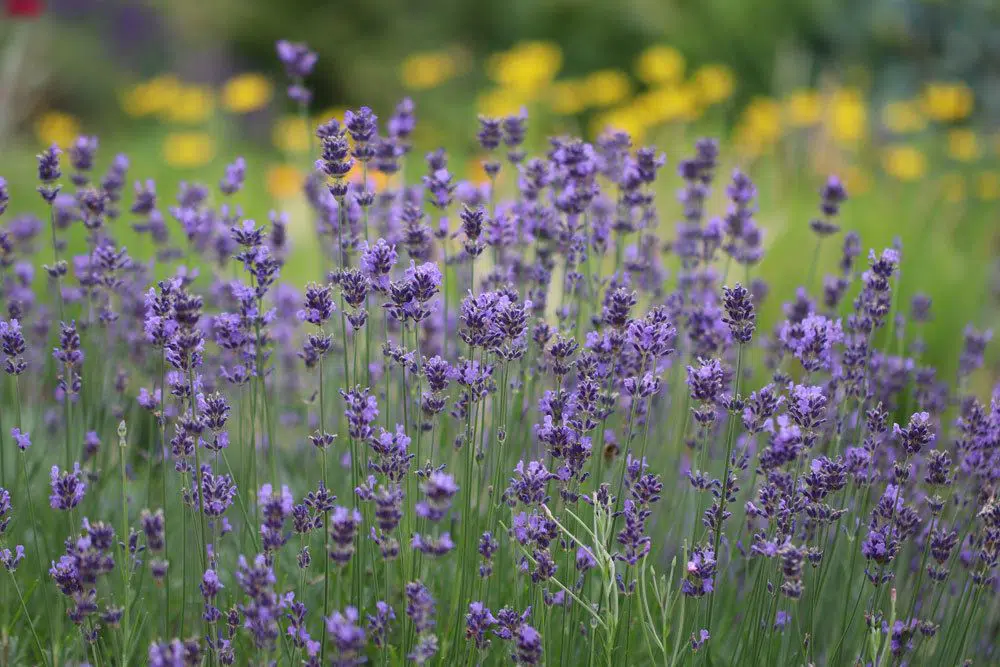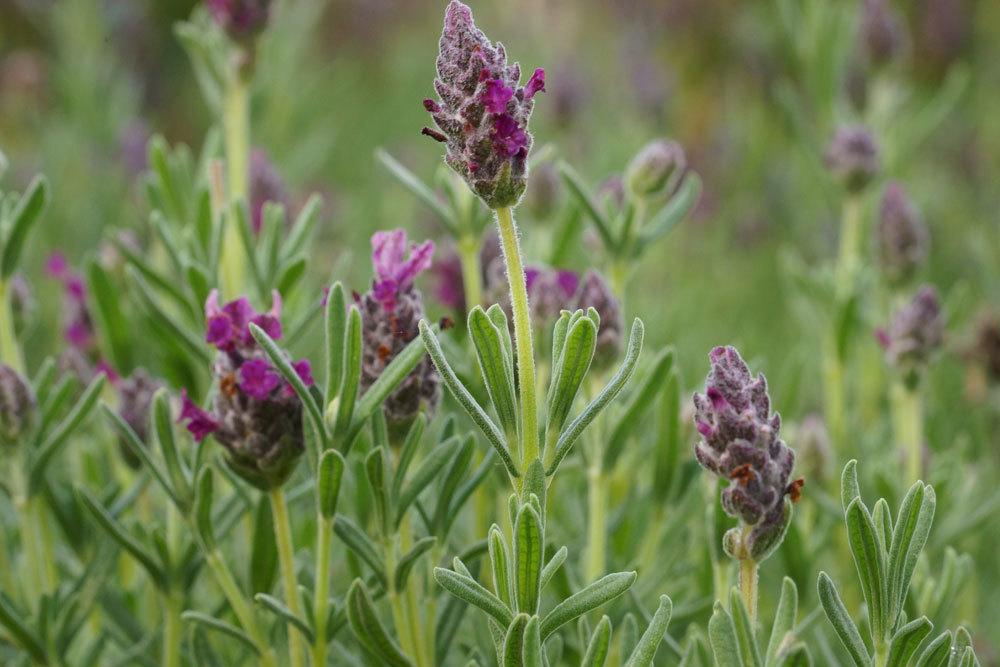Lavandula species are among the most popular aromatic herbs in the garden, because they look beautiful and give off an aromatic fragrance. If you want to plant lavender in the garden, you need to consider not only planting time and spacing. Although the varieties can be planted at the same time, they are characterized by different growth characteristics. You should pay attention to these when planting, so that the bushes are not too close and can develop undisturbed.
Contents
Planting lavender
Planting time of lavender
Lavandula species grow slowly and require several months for the roots to spread in the substrate. Therefore, it is important to plant hardy plants early in the year in the desired location in the bed. This will give the plants enough time to grow optimally until winter. If you buy pre-potted specimens, you can plant them out in the spring. They are relatively insensitive to late frosts.
- Planting outdoors between the end of March and mid-May.
- earlier planting possible if plants are strong enough
- planting distance between 40 and 60 centimeters depending on the species
- water well and avoid waterlogging

Planting seedlings
Start sowing seeds as early as possible, so that the plant begins to bloom in the same year. They are grown in seed trays in the greenhouse. Once the seedlings reach a few centimeters, they are singled. Young plants should not be planted in the bed before the Ice Saints in May, as they can be damaged by late frosts.
- Plant in the greenhouse and cold frame from the end of February.
- keep a distance of 15 to 20 centimeters
- plant outdoors from the middle of May
- depending on the species, ensure a planting distance of between 40 and 60 centimeters
- Keep the soil well moist
Certain Lavandula species are only suitable for cultivation in containers, as they do not survive the winter outdoors. In a planter, lavender is less demanding when it comes to planting time. However, choosing a suitable time will save the plant from unnecessary stress:
- repotting possible all year round
- ideal time for repotting is before budding in March
- new pot must be ten centimeters larger than the root ball
- planting distance
As a general rule, spice plants should not be planted too close together. Lavandula species grow bushy and spreading. Since the shrubs are very sun-hungry, individuals that are too close together can rob each other of light. Nutrient supply also suffers when the plants root through the soil and compete for nutrients.
Tip: Plant lavenders in the soil so that the planting distance is about half their growing height.
Low-growing species
There are numerous low-growth varieties that reach low growing heights and expand only moderately in width. These Lavandula varieties have low space requirements and can be set more closely than tall-growing varieties. A spacing of 20 to 30 inches between plants is ideal.
Crested lavender (Lavandula stocheas).
- ‘Kew Red’: inflorescences red-white, compact habit.
- ‘Otto Quast’: pink-purple flowers, dense growth, goes wide
- ‘Merle’: red-purple inflorescences, compact growth

Provence lavender (Lavandula x intermedia)
- ‘Julien’: slow growth, purple flowers
- ‘Bleu de Collines’: compact growth, flowering and aromatic fragrance
- ‘Speciale’: lush growth and late flowering, purple flowers
High growing species
Tall varieties spread much more and have a larger space requirement. You should leave at least 40 to 50 inches of space between these plants to allow for undisturbed growth. Plants that are too close together will have suboptimal ventilation, allowing pathogens and mold spores to spread.
True lavender (Lavandula angustifolia).
- ‘Hidcote Pink’: pale pink flowers, vigorous growth.
- ‘Blue Cushion’: compact variety, light purple flowers, suitable for rock garden or pot culture
- ‘Dwarf Blue’: medium height, purple flowers, suitable for bed borders
- ‘Melissa’: white flowering
Lavandin (Lavandula angustifolia x latifolia)
- ‘Impress Purple’: up to 90 centimeters high
- ‘Abrialii’: about 75 centimeters high
- ‘Fragant Memories’: about 60 to 75 centimeters high
- ‘Grappenhall’: about 60 to 75 centimeters high
Tub and balcony box
Many plants suitable for containers do not like planters that are too large. This is not true with lavender. The species feel more comfortable the more space the tub offers. If you are planting different species in a tub, you should match the number of plants to the size of the tub. Low Lavandula species harmonize perfectly with roses. Since they are very demanding and also require space, do not put too many specimens in the same planter. For planting in tubs and balcony boxes, non-hardy varieties of Provence lavender are recommended. They can spend the cold season in protected winter quarters.
- ‘Peter Pan’: between 25 and 35 centimeters high.
- ‘Nana Alba’: between 25 and 35 centimeters high
- Lavandula pinnata: between 50 and 70 centimeters high
- Varieties of Lavandula stocheas
Planting lavender in the bed
Very few lavender varieties are suitable for direct planting outdoors, as they require Mediterranean conditions and cannot survive the frosty winter temperatures in Central Europe. Only true lavender grows at higher elevations and can handle lower temperatures. There are some hardy varieties that can survive temperatures as low as -15 °C for short periods. These varieties are among the classics in the garden bed:
‘Blue Scent’: undemanding and robust with violet-blue flowers.
‘Jamlitz’: especially suitable for rough locations, grows tall and needs sufficient spacing
‘Ellagance Purple’: bushy growth, hardy, purple flowers
Tip: Waterlogging is the biggest enemy of all Lavandula species. Therefore, place the shrubs on south-facing slopes where excess water can easily drain away.

